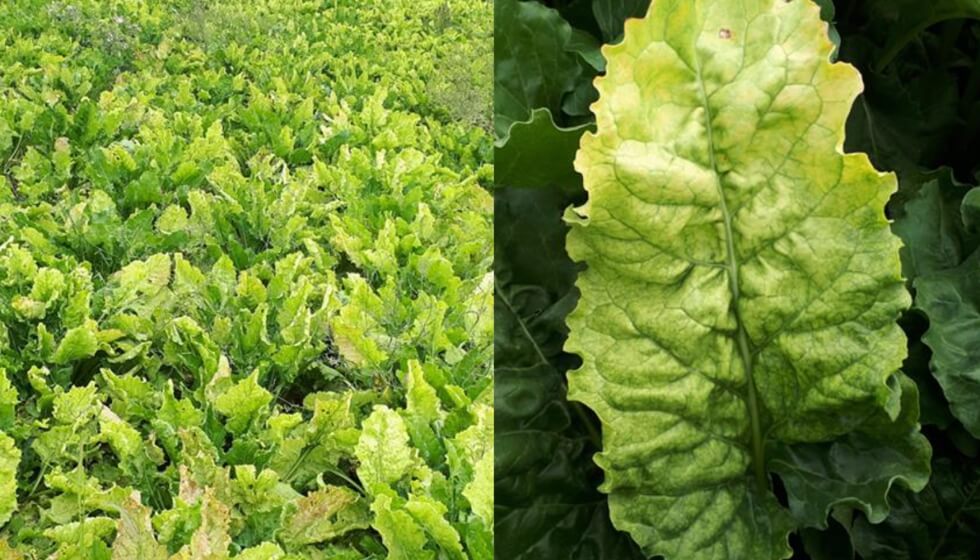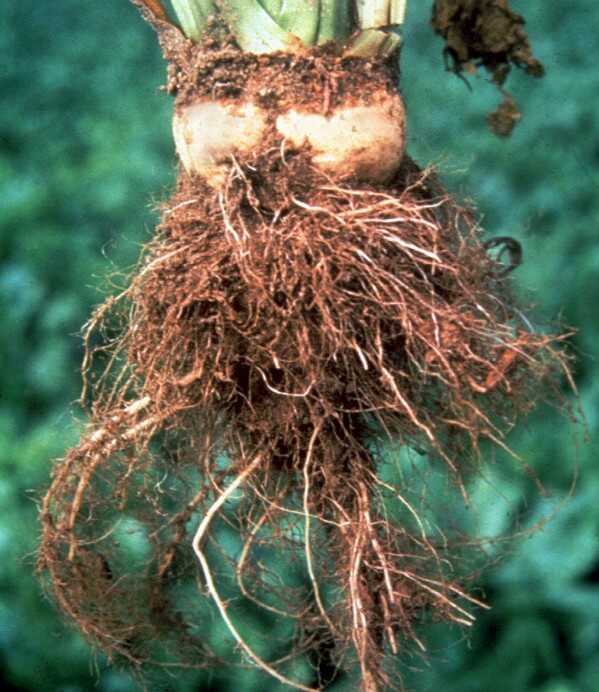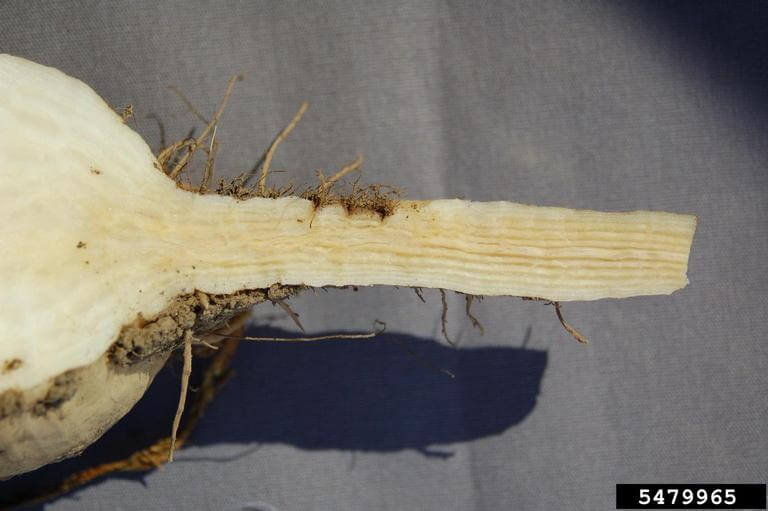
Remolacha de mesa
How to recognize and combat rhizomania in table beets
Rhizomania
Virus
Type:
Risk to the plant:
CRITICAL
Beet Necrotic Yellow Vein Virus (Bnyvv)
Pathogen:

Virus
WHO CAUSES IT?
Beet necrotic yellow vein virus (BNYVV) is the causal agent of rhizomania in beet. This virus belongs to the Benyviridae family and is transmitted by the soil fungus Polymyxa betae. BNYVV has a segmented single-stranded RNA genome of positive polarity, allowing efficient replication within host cells. The BNYVV cycle begins when the zoosporangia of the fungus Polymyxa betae release zoospores in the presence of water. These zoospores swim to the roots of the beet, penetrate the root cells and release the virus. Once inside the plant cell, the virus replicates and spreads through the vascular system. Viral particles accumulate in the roots, interfering with normal plant growth and development. The zoospores of the fungus can persist in the soil for several years, making it difficult to control the disease.
SYMPTOMS
Rhizomania is a devastating disease that affects beets, causing a significant decrease in root production and quality. Initial symptoms include yellowing and necrosis of leaf veins, followed by general wilting of the plant. As the infection progresses, the roots show abnormal and excessive growth of secondary roots, known as "beards." This results in deformed and smaller roots, negatively affecting crop yield. Additionally, infected plants may show delayed growth and reduced tolerance to other stress factors.
- Yellowing of the veins of the leaves
- Vein necrosis
- General wilting of the plant
- Abnormal growth of secondary roots
- Deformed and smaller roots
- Delayed growth



DEVELOPMENT CONDITIONS
Temperature:
15°C - 25°C
Humidity:
60% - 80%
HOW IS IT SPREAD?
Zoospores of the fungus Polymyxa betae, contaminated irrigation water, infested soil, contaminated agricultural tools and machinery, infected seedlings
HOW TO ELIMINATE IT?
Home treatments
There are no home treatments
Natural allies
Chemical treatments
There are no treatments for this disease. Treatments are directed at the insect vectors that transmit it. See insect treatments.
RECOMMENDED PRODUCTS TO ELIMINATE THE PEST
Sponsored link
Sponsored link
Sponsored link
Sponsored link
Sponsored link
Sponsored link
Sponsored link
Sponsored link
Sponsored link
Effective against all types of fungi
Sponsored link
Sponsored link
Sponsored link
Sponsored link
Sponsored link
Sponsored link
Sponsored link
REPELLENT PLANTS
RECOMMENDATIONS
















































